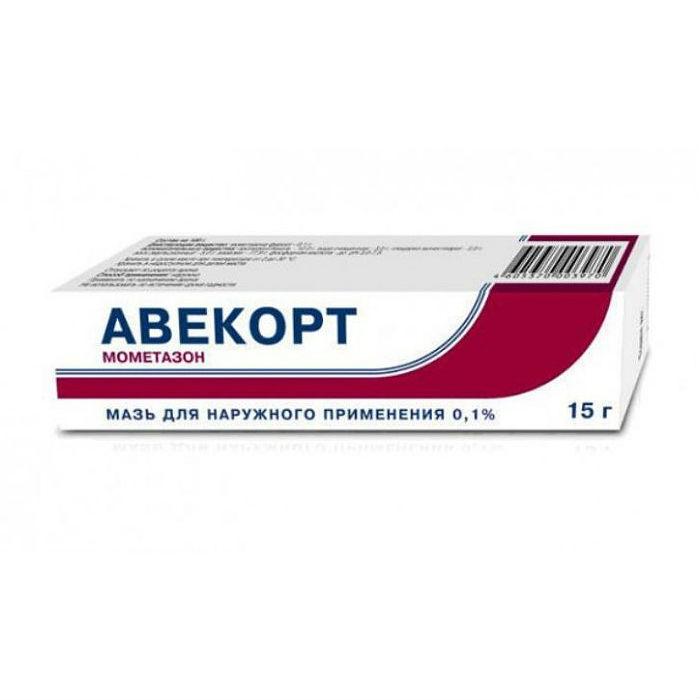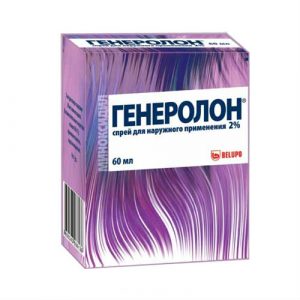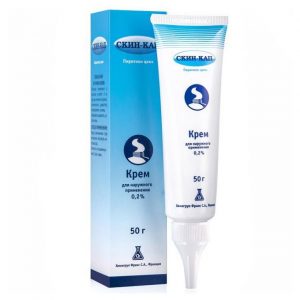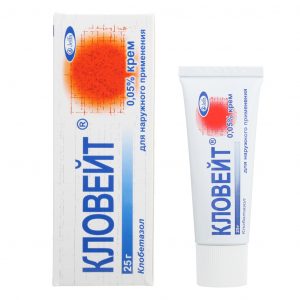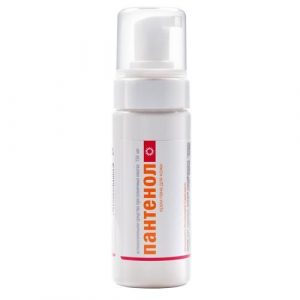Description
Release form
Ointment for external use
Packing
Tube 15 g.
Pharmacological action
Avekort – GCS for topical use. It has anti-inflammatory and anti-allergic effects. It inhibits the release of inflammatory mediators. Increases the production of lipocortin, which is an inhibitor of phospholipase A2, which leads to a decrease in the formation of arachidonic acid.
Prevents marginal accumulation of neutrophils, which reduces inflammatory exudate and cytokine production, inhibits macrophage migration, and reduces the rate of infiltration and granulation. Reduces inflammation by reducing the formation of chemotaxis substance (effect on late allergy reactions), inhibits the development of an immediate allergic reaction (due to inhibition of the production of arachidonic acid metabolites and a decrease in the release of inflammatory mediators from mast cells).
With daily application of the cream to children over 2 years old with allergic dermatitis, the therapeutic effect is manifested in 3 weeks.
Indications
Inflammation and itching of the skin with dermatoses (including atopyclinical dermatitis, psoriasis), in which therapy is indicated for corticosteroids.
Contraindications
Hypersensitivity to any component of the drug or to other GCS, rosacea, perioral dermatitis, bacterial, viral (Herpes simplex. Herpes zoster) or fungal infection of the skin, tuberculosis, syphilis, post-vaccination reactions, pregnancy (extensive treatment skin, prolonged treatment), lactation (use in large doses and / or for a long time), children under 2 years old. With caution: application to the skin of the face and the intertriginous surface of the skin, the use of occlusive dressings, as well as the treatment of large areas of the skin and / or long-term treatment (especially in children).
Pregnancy and lactation
The safety of mometasone during pregnancy and lactation has not been studied. GCS penetrate the placental barrier. Long-term treatment and the use of large doses during pregnancy should be avoided, due to the threat of a negative effect on the development of the fetus. GCS are excreted in breast milk, so in the case when it is supposed to use GCS in large doses and / or for a long time, breast-feeding should be stopped.
Special instructions
If there is no effect within 2 weeks of drug therapy, the diagnosis should be clarified. When applied to large areas of the skin for a long time, especially when using occlusive dressings, the development of the systemic effect of GCS is possible. Given this, it is necessary to control the function of the hypothalamic-pituitary-adrenal system. Propylene glycol, which is part of the drug, may cause irritation at the site of application. In such cases, you should stop using the drug and prescribe the appropriate treatment. It should be borne in mind that corticosteroids are capable of changing the manifestation of certain skin diseases, which may complicate the diagnosis. In addition, the use of corticosteroids can be a reason for the delay in wound healing. With prolonged treatment with corticosteroids, a sudden cessation of therapy can lead to the development of rebound syndrome, which manifests itself in the form of dermatitis with intense reddening of the skin and a burning sensation. Therefore, after a long course of treatment, discontinuation of the drug should be done gradually, for example, switching to an intermittent treatment regimen before completely discontinuing it. Due to the fact that in children the ratio of surface area to body weight is greater than in adults, children are at greater risk of suppressing the function of the hypothalamic-pituitary-adrenal system and the development of Itsenko-Cushing’s syndrome with the use of any local corticosteroids. Long-term treatment of children with corticosteroids can lead to impaired growth and development. The use of the drug in children for more than 3 weeks has not been studied. Children should receive a minimum dose sufficient to achieve the effect. There are no data on the adverse effects of the drug on the ability to drive vehicles and work with mechanisms.
Composition
1 g of the ointment contains 1 mg mometasone furoate.
Dosage and Administration
Externally. A thin layer of ointment is applied to the affected areas of the skin once a day. Duration of treatment: 7-28 days, determined by the effectiveness of therapy, as well as patient tolerance to the drug, the presence and severity of side effects.
dermatitis, maceration of the skin, the attachment of a secondary infection, striae, prickly heat. The likelihood of these adverse events increases with the use of occlusive dressings.
Drug Interactions
Interactions with other drugs have not been described to date. According to the chemical properties of mometasone, furoate is incompatible with alkalis.
overdose
Symptoms: suppression of function of hypothalamic-pituitary-adrenal system (including secondary adrenal insufficiency). Treatment is symptomatic. If necessary – correction of electrolyte imbalance, withdrawal of the drug (with long-term therapy – gradual withdrawal).
Storage conditions
Store in a dry place out of the reach of children at temperatures between + 2C and + 30C.
Shelf life
2 years.
Active substance
Mometasone
dosage form
ointment
Prescribing
Prescribing
Adults prescribed by a doctor, Children over 2 years old, Children prescribed by a doctor
